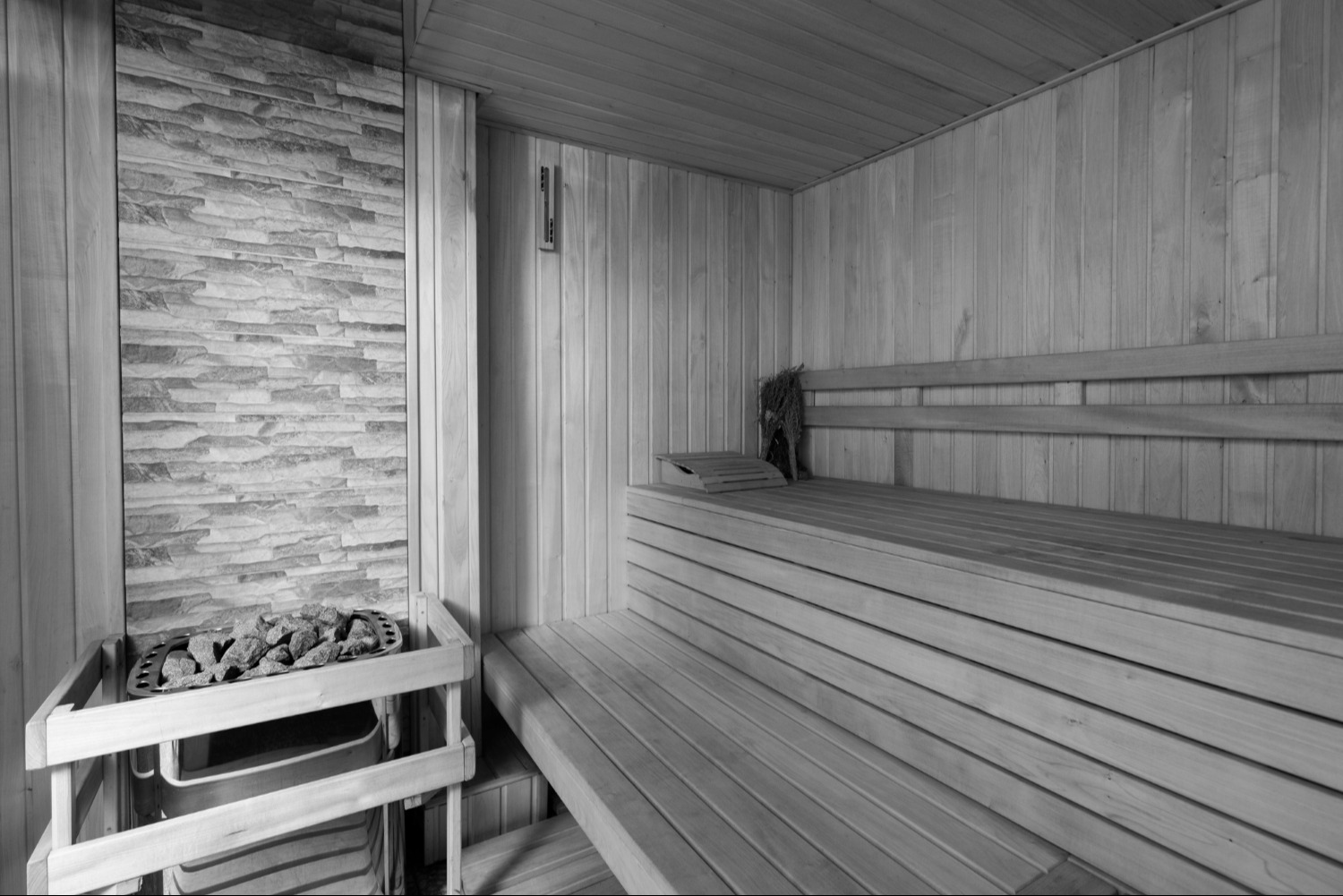Sauna and Your Health: More Than Just Heat
Regular sauna use supports heart health, reduces inflammation and pain, boosts metabolism, and promotes overall longevity through powerful cellular and cardiovascular benefits.

When you think of saunas, you might picture relaxation after a workout or a way to warm up on a cold day. But the evidence tells us it’s much more than that. Regular sauna use has been studied extensively — especially in Finnish cohorts — and the findings are striking: consistent use is linked with improved cardiovascular health, reduced pain and stiffness in rheumatic disease, reduced inflammation, possible neurocognitive protection, and even lower all-cause mortality.
The Cardiovascular and Longevity Benefits
The strongest evidence centers on heart health and survival. Large population studies show that adults who use the sauna 4–7 times per week have significantly lower risk of high blood pressure, cardiovascular events, and sudden cardiac death compared to less frequent users. In fact, the risk of dying from any cause was about 40% lower in frequent sauna users compared to once weekly users.
Comprehensive reviews, including one published in Mayo Clinic Proceedings (2018) confirm these findings and highlight sauna’s role in improving vascular function, lowering inflammation, and even reducing neurocognitive decline risk. For those who can’t tolerate vigorous exercise — whether due to age, arthritis, or chronic disease — sauna use mimics many of the same cardiovascular benefits of moderate-intensity aerobic exercise, making it a powerful tool for maintaining heart health.
Relief in Rheumatic and Musculoskeletal Conditions
Patients with various types of arthritis often report less pain, reduced joint stiffness, and better mobility with regular sauna use. The likely drivers include anti-inflammatory pathways, balancing the autonomic nervous system, and improved blood flow. Importantly, these benefits are even greater when combined with appropriate exercise.
How Sauna Works at the Cellular Level
The benefits of sauna extend well beyond the cardiovascular system. At a cellular level, the heat activates heat shock proteins (HSPs) — specialized proteins that act like repair crews for your cells.
- Repair and Resilience: HSPs stabilize and repair proteins damaged by stress, aging, or oxidative processes, helping cells recover more efficiently.
- Anti-Inflammatory Action: By calming inflammatory pathways, HSPs may explain why sauna users with arthritis and other rheumatic conditions often feel better after sessions.
- Metabolic Protection: Evidence suggests HSPs improve insulin sensitivity and glucose handling, offering protection against metabolic syndrome and diabetes.
- Cardiovascular Support: HSPs contribute to healthier blood vessels by reducing oxidative stress and improving endothelial function.
Think of HSPs as your body’s cellular stress shields. Just as exercise trains your muscles to adapt, sauna trains your cells to handle stress better — a concept known as hormesis. This helps explain why consistent sauna use amplifies the benefits of exercise and recovery.
When Sauna and Exercise Work Together
Emerging randomized controlled trials suggest that sauna use after exercise produces additive effects: greater reductions in blood pressure, improved cardiorespiratory fitness, and more favorable lipid profiles than exercise alone.
Put simply: exercise stresses the body in ways that drive adaptation, and sauna reinforces those adaptations while accelerating recovery.
How Much Is Enough?
Most of the Finnish cohort studies suggest the greatest benefits are seen with:
- Frequency: 4–7 times per week
- Duration: 15–20 minutes per session
- Temperature: Typically 80–100 °C (176–212 °F) in traditional Finnish dry saunas
That said, benefits are still seen at lower frequencies (2–3 sessions per week). The key is consistency over months and years.
More Than Physiology: The Social Factor
In many cultures, sauna is not just a solo therapy — it’s a ritual done with friends, family, or community. Social connection is itself a powerful predictor of longevity, associated with lower risk of chronic disease and premature death. Sharing a sauna session may provide benefits that go beyond physiology — creating space for conversation, stress reduction, and community.
Safety and Contraindications
For most healthy adults and patients with stable cardiovascular disease, sauna use is well tolerated. But there are clear situations where it should be avoided:
- Unstable angina or recent myocardial infarction
- Severe aortic stenosis
- Decompensated heart failure or acute illness
- Orthostatic hypotension (higher risk of dizziness or fainting)
- Any sauna session combined with alcohol
The most common adverse effects are mild — dehydration, lightheadedness, or a transient drop in blood pressure. These can be prevented with adequate hydration and by avoiding prolonged exposure.
If you have cardiovascular disease, chronic illness, or aren’t sure if sauna therapy is safe for you, consult your physician before beginning regular sessions.
Bottom Line
Sauna therapy is more than relaxation — it is a well-studied, science-backed practice that improves cardiovascular health, reduces pain and stiffness, supports metabolic resilience through heat shock proteins, and even strengthens social connection. For adults with cardiovascular risk factors, rheumatic conditions, or limited exercise tolerance, regular sauna use can be a safe, simple, and powerful way to promote long-term health.
Bottom line, whether it’s a spa sauna or your local community centre, grab your stuff and go.
References
- Laukkanen T, et al. JAMA Intern Med. 2015;175(4):542–548.
- Laukkanen T, et al. BMC Med. 2018;16:219
- Patrick RP, Johnson TL. Exp Gerontol.2021; 154
- Hannuksela ML, Ellahham S. Am J Med. 2001;110(2):118–126.
- Iguchi M, et al. J Appl Physiol. 2012;112(11):1827–1835.
- Kondo T. J Mol Cell Cardiol. 2016;95:26–33.
- Holt-Lunstad J, et al. PLoS Med. 2010;7(7):e1000316.
- Lee E, et al. Am J Physiol. 2022; 323(3): R289-R299
- Laukkanen JA, Laukkanen T, Kunutsor SK. Mayo Clin Proc. 2018; 93(8):1111-1121

.avif)



